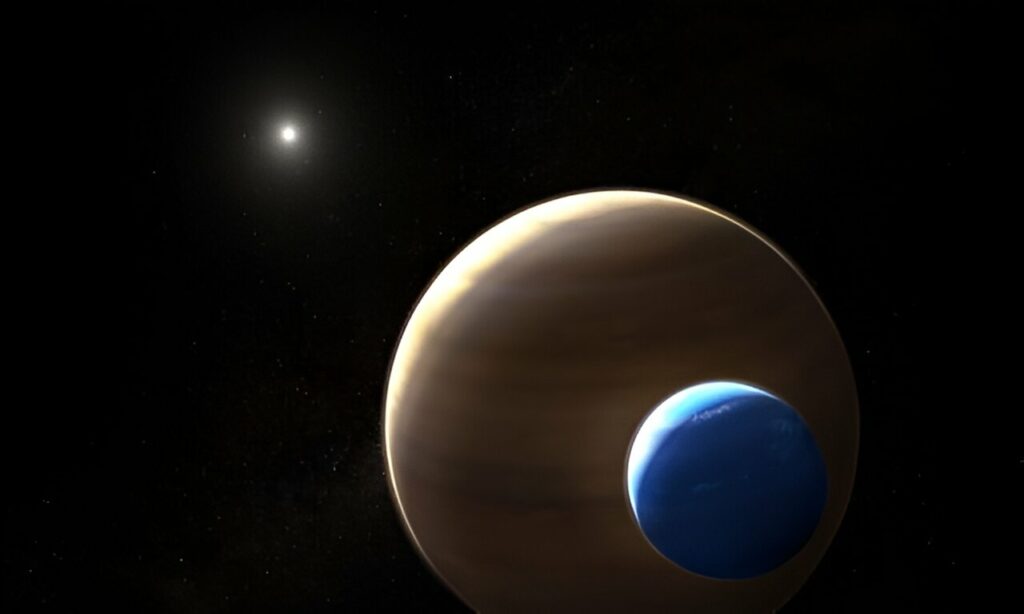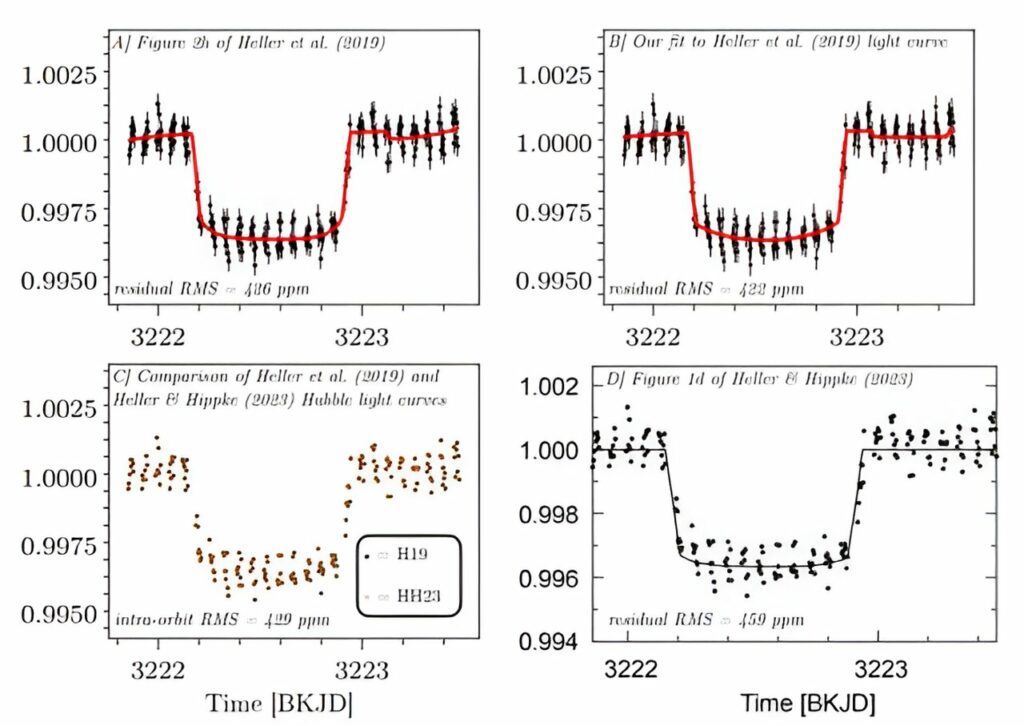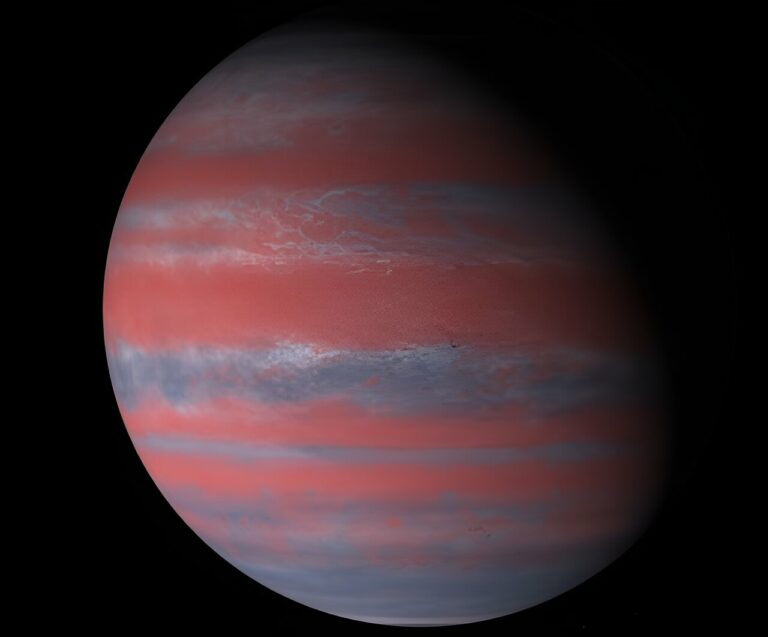Have Exomoons Been Discovered or Not?
Exoplanets potentially having exomoons is a fascinating concept, and while it would be extraordinary if they did, our knowledge on this matter is limited. A few years ago, astronomers believed they had discovered exomoons around two exoplanets, namely Kepler-1625b and Kepler-1708b. However, did they actually find them?
In 2017, researchers uncovered evidence of moons orbiting Kepler-1625b and Kepler-1708b. This discovery was met with great excitement, although the researchers cautioned that their findings were inconclusive. They expressed hope that the Hubble Space Telescope would be able to provide confirmation regarding the existence of these exomoons. “Finally, we report evidence for an exomoon candidate Kepler-1625b I, which we briefly describe ahead of scheduled observations of the target with the Hubble Space Telescope,” stated the authors (Teachey et al).
More recently, Rene Heller and Michael Hippke published an article in Nature Astronomy, suggesting that the data relied upon by Teachey et al does not support the presence of exomoons. “The probability of a moon orbiting Kepler-1708b is clearly lower than previously reported,” commented research co-author Michael Hippke from the Sonneberg Observatory. He further added, “The data do not suggest the existence of an exomoon around Kepler-1708b.” Heller and Hippke made similar statements regarding Kepler-1625b.
Now, a group of researchers, including David Kipping and Alex Teachey, who were among the authors of the original 2017 research that presented evidence of exomoons, have responded to Heller and Hippke.
Kipping and Teachey have responded to the argument made by Heller & Hippke regarding the alleged refutation of the exomoon candidates Kepler-1625 b-i and Kepler-1708 b-i. According to Kipping and Teachey, Heller and Hippke disregarded valuable data, resulting in the elimination of the exomoon-supporting signal in the Hubble light curves for Kepler-1625 b-i. Their response can be found in a Matters Arising article currently being considered by Nature Astronomy and is also available on the arXiv preprint server.
Detecting exomoons is an incredibly challenging task, with the only evidence being found in light curves. The two exoplanets in question, Kepler-1625 b and Kepler-1708b, are located at distances of 8,200 and 5,500 light-years, respectively. Despite our discussions about galaxies that are billions of light years away, it is important to remember the extreme distance of these two planets and the difficulties associated with observing them.

Kepler made the discovery of the pair of exoplanets using the transit method in this study. The transit method involves measuring the decrease in brightness caused by a planet passing in front of its star. This decrease in brightness creates a light curve, which astronomers examine to determine the presence of a planet. If there is an exomoon orbiting a planet detected through the transit method, it will also cause a decrease in brightness, known as a sub-transit.
However, these light curves are not easily noticeable in the data. It requires a thorough analysis to identify them. Exomoon light curves are much fainter compared to exoplanet light curves. Due to their faintness, the presence of noise in the signal can obscure them or even create false signals. Only through structured analysis can these faint exomoon light curves be revealed, and there are multiple methods to analyze this type of data. Different researchers utilize different techniques, models, and algorithms to analyze the data, and sometimes they may exclude certain data that other researchers consider important. It is a complex process.
In this particular case, Kipping and Teachey argue that Heller and Hippke made mistakes in their analysis and also omitted crucial information.
“We have demonstrated that their Hubble light curve exhibits approximately 20% higher noise and disregards 11% of the valuable data, which compromises its ability to detect the subtle signal of Kepler-1625 b-i,” state Kipping and Teachey.
Kepler-1708 b-i also experienced a similar situation. According to Kipping and Teacher, Heller and Hippke mishandled some of the data, specifically in their choices for detrending. Detrending involves eliminating a trend in the data to reveal cyclical and other patterns. Heller and Hippke’s analysis and detrending showed no evidence of an exomoon around Kepler-1708 b-i. However, when Kipping and Teacher reviewed Heller and Hippke’s work, they claimed to have “…recovered the original moon signal, with even greater confidence than before.”
Kipping and Teacher make it clear that they approach the matter cautiously, stating, “We want to emphasize that both exomoon candidates may not be genuine. Our initial and ongoing assertion is modest: these objects are candidates for which the data presents substantial but not entirely conclusive evidence in support of exomoons.”
Kepler-1708b
Heller and Hippke’s analysis has been criticized by Kipping and Teacher, who argue that it is flawed. Despite this, the light curve for Kepler-1708 b-i still displays a potential exomoon signal, represented by a dashed line in all of the panels below.

In their 2023 publication, Heller and Hippke disputed the exomoon explanation by stating that the transit signal is not distinguishable from other sources of variations in the light curve, which are likely attributed to stellar or systematic factors. However, Kipping and Teacher’s research demonstrates that the curve persists in the data.
Kepler-1625 b-i
Kipping and Teacher raise objections to the analysis conducted by Heller and Hippke regarding Kepler-1625 b-i. They argue that the other researchers made mistakes in their analysis, particularly by removing the first exposure in each orbit, resulting in a loss of 11% valuable data. According to K & T, this removal of data hinders the detection of a faint exomoon signal.
Furthermore, K & T highlight that Heller and Hippke failed to provide important data upon request, even through email correspondence. While this could have a simple explanation, it raises concerns as sharing important data with other researchers is expected. K & T also criticize the lack of description regarding the reduction of the Hubble data by Heller and Hippke, considering the significant number of choices required to interpret an instrument with strong systematics.

For their work, K & T assumed that Heller and Hippke used the same data reduction method as in their previously published work. Despite this assumption, K & T still discovered signals indicating a potential exomoon.
In contrast to Heller and Hippke’s conclusion that the exomoon candidates Kepler-1625 b-i and Kepler-1708 b-i are unlikely, Kipping and Teacher argue that their arguments are flawed due to various choices and interpretations that do not withstand scrutiny.
Unless Heller and Hippke provide a further response, Kipping and Teacher assert that both candidates remain viable but require additional observations.
This article is republished from PhysORG under a Creative Commons license. Read the original article.
Do not forget to share your opinion with us to provide you with the best posts !




0 Comments